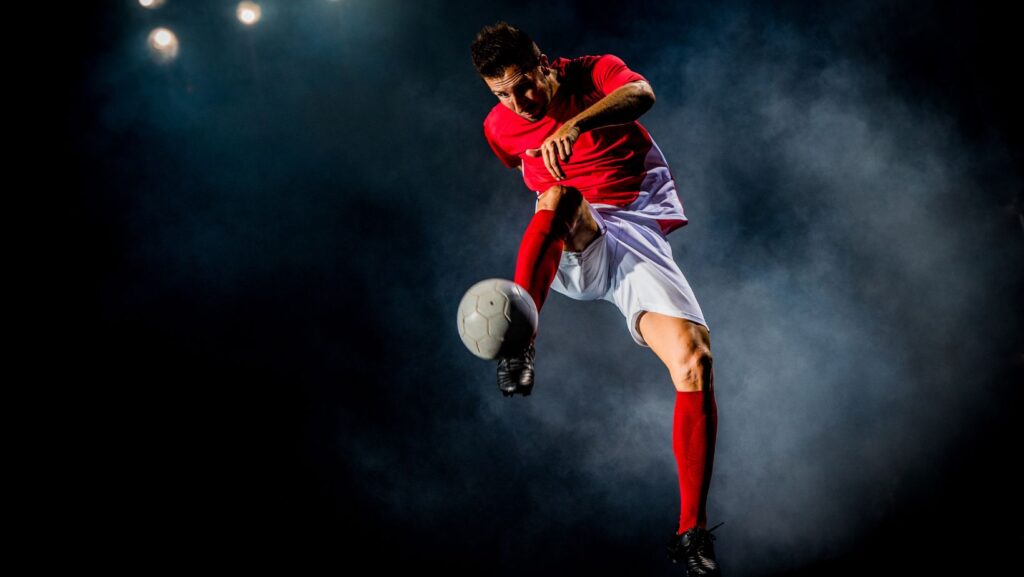Soccer isn’t just a game; it’s an art form, a spectacle that captivates millions worldwide. And within this sport, there’s a niche that’s been gaining traction: soccer freestyling. This discipline takes the beauty of soccer to a whole new level, transforming it into a dazzling display of tricks and skills.
Freestyling tricks are not just about showmanship; they’re about mastering the ball, understanding its every move, and bending it to your will. Whether you’re an aspiring freestyler or a seasoned pro, there’s always a new trick to learn, a new challenge to conquer.
In the following sections, we’ll delve into the world of soccer freestyling tricks, exploring the techniques that make this sport so captivating. We’ll decode the artistry, the finesse, and the sheer skill required to perform these tricks, offering insights that’ll help you elevate your own game. Get ready to embark on an exciting journey into the heart of soccer freestyling.
Delving into the art of soccer freestyling tricks opens up a new world where soccer extends beyond a competitive sport, transforming into a spectacle of creativity and athleticism. Thriving on techniques, artistry, finesse, and precise movement, it becomes a captivating dance enacted with a soccer ball as a partner.
Soccer Freestyling Tricks
 Getting a grasp on the fundamental aspects of soccer freestyle, a critical initial step, involves developing a deep understanding and control over the ball. The mastery needed here does not limit to merely making the ball defy gravity, rather it covers a spectrum of intricate moves. For example, moves such as Around the World (ATW), in which a freestyler juggles the ball and makes a full rotation around it with their foot, to crossover tricks that combine juggling and ATW. No single trick exists as a mandate; instead, a freestyler’s skillset emerges from a unique combination of mastered moves that showcases their creativity and style.
Getting a grasp on the fundamental aspects of soccer freestyle, a critical initial step, involves developing a deep understanding and control over the ball. The mastery needed here does not limit to merely making the ball defy gravity, rather it covers a spectrum of intricate moves. For example, moves such as Around the World (ATW), in which a freestyler juggles the ball and makes a full rotation around it with their foot, to crossover tricks that combine juggling and ATW. No single trick exists as a mandate; instead, a freestyler’s skillset emerges from a unique combination of mastered moves that showcases their creativity and style.
History of Soccer Freestyle
Tracing the roots of soccer freestyle, it unearths a not-so-distant history. This niche began its journey in the 20th century, capturing attention during the 1980s when Diego Maradona showcased his remarkable ball-juggling skills at warm-ups before games. Exclusive focus as an art form, though, didn’t make headway until the 21st century. A pivotal moment arrived in 2003 with the advent of the Red Bull Street Style competition. This global event encouraged the emergence of renowned freestylers, including first champion Séan Garnier. It showcased the potential of this art, proving it’s not just about the tricks but also the style, rhythm and unique skillset brought to an individual performance.
Essential Soccer Freestyling Tricks
Soccer freestyling tricks often elevate the sport to an art form. These tricks showcase a player’s mastery and creative flair with the ball. Two key areas of focus involve juggling fundamentals and advanced juggling variations.
The Juggling Fundamentals
Juggling, a basic technique in soccer freestyling, requires players to keep the ball in the air using any part of the body except the arms and hands. Successful execution unfolds a series of smooth, controlled movements that keep the ball aloft. It’s a critical foundational skill that freestylers build upon to execute more complex tricks. Take Séan Garnier, for instance, who frequently employs basics like foot juggle, thigh juggle, and head juggle, which help him maintain control of the ball while preparing for his next move.
Advanced Juggling Variations
As freestylers gain comfort with fundamental juggling techniques, they may venture into advanced juggling variations. These intricate maneuvers often blend multiple tricks, demanding a high level of skill and control. Tricks like tornado, an advanced variation of juggling, involve a freestyler lifting the ball with one foot, spinning it around, then catching it on the other foot. Similarly, tricks like double around the world (ATW) require the player to make two full rotations around the ball in one contact, demanding precise control and timing. As freestylers continue to hone their skills, they push the boundaries of the sport, creating new techniques that others attempt to master.
